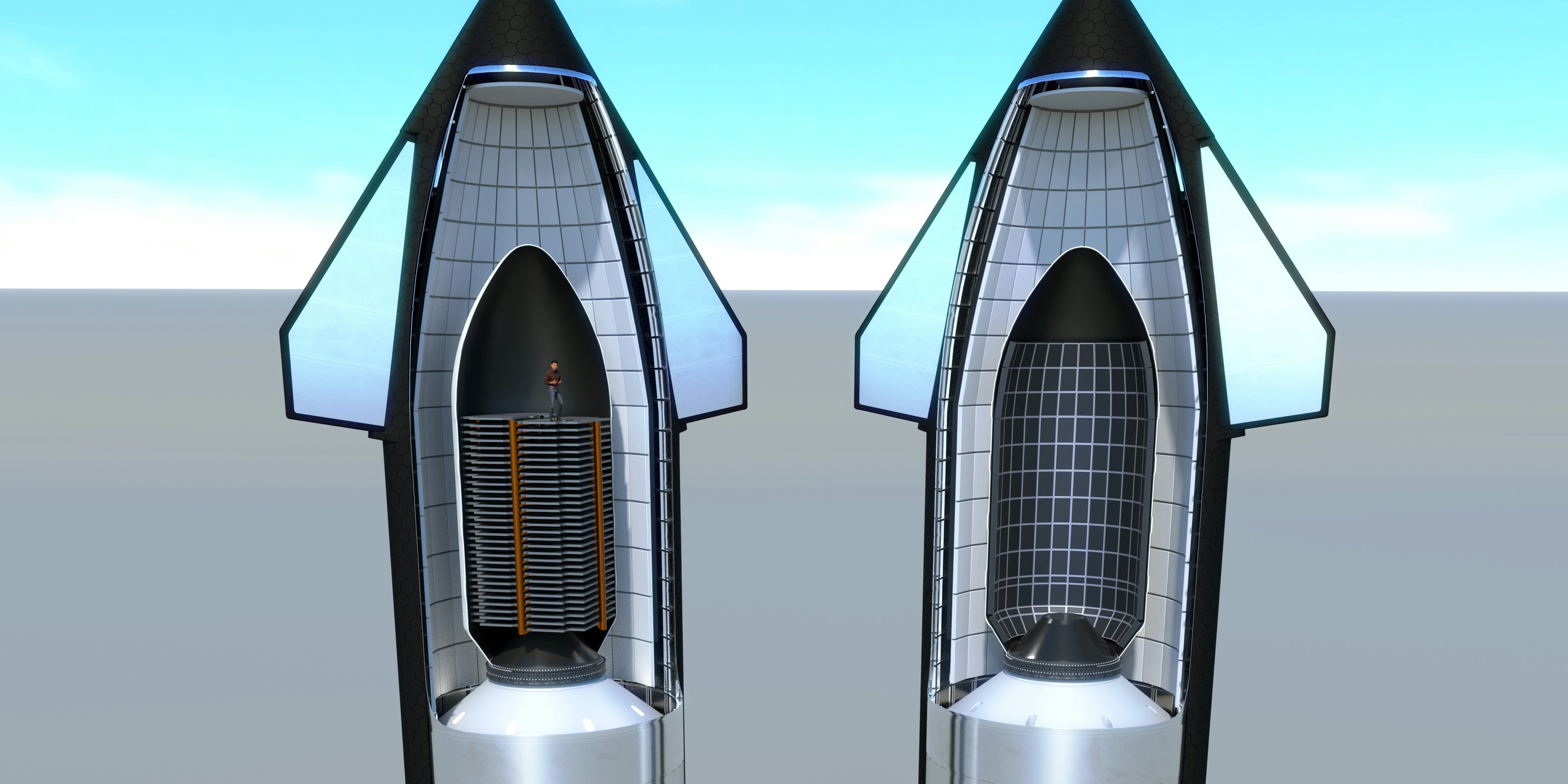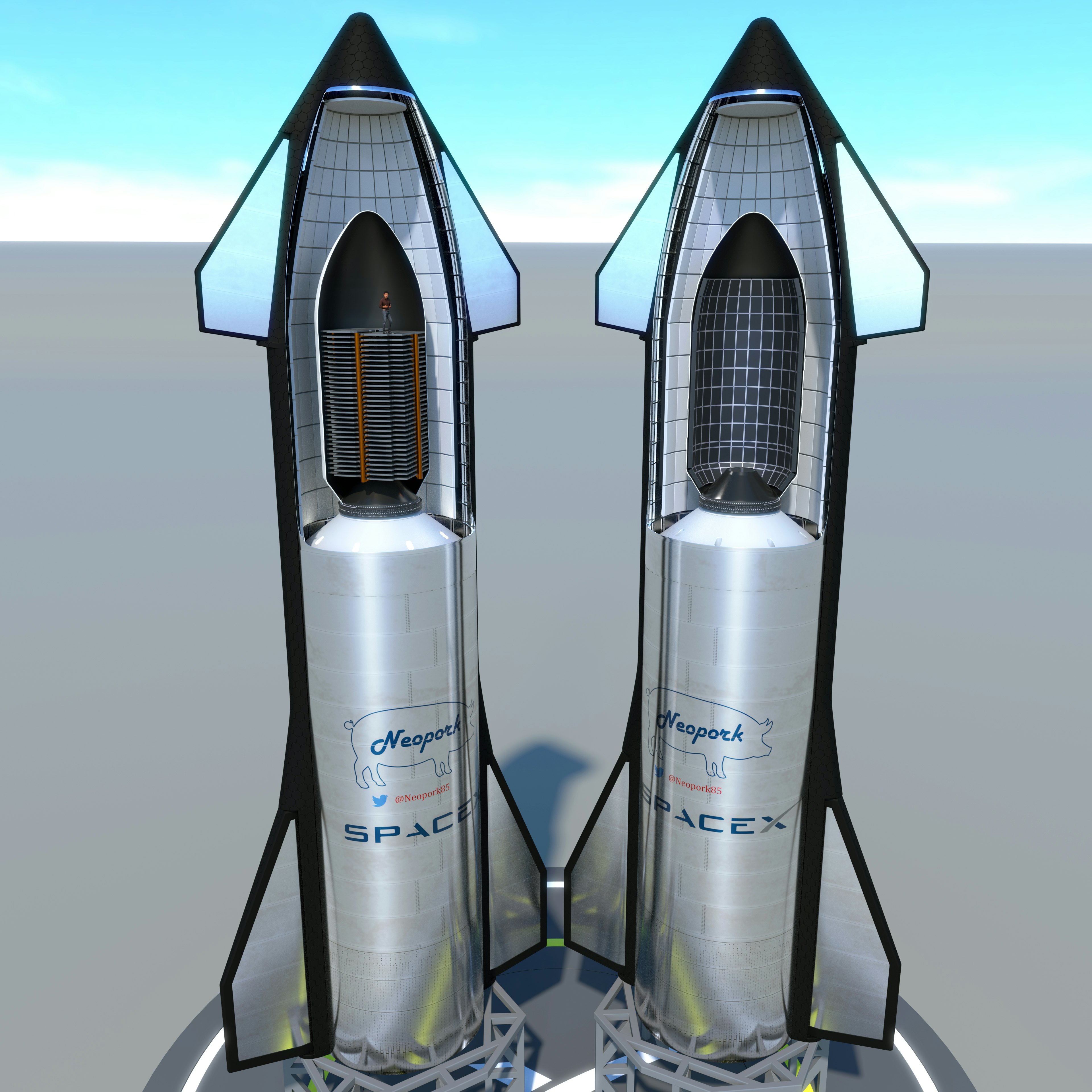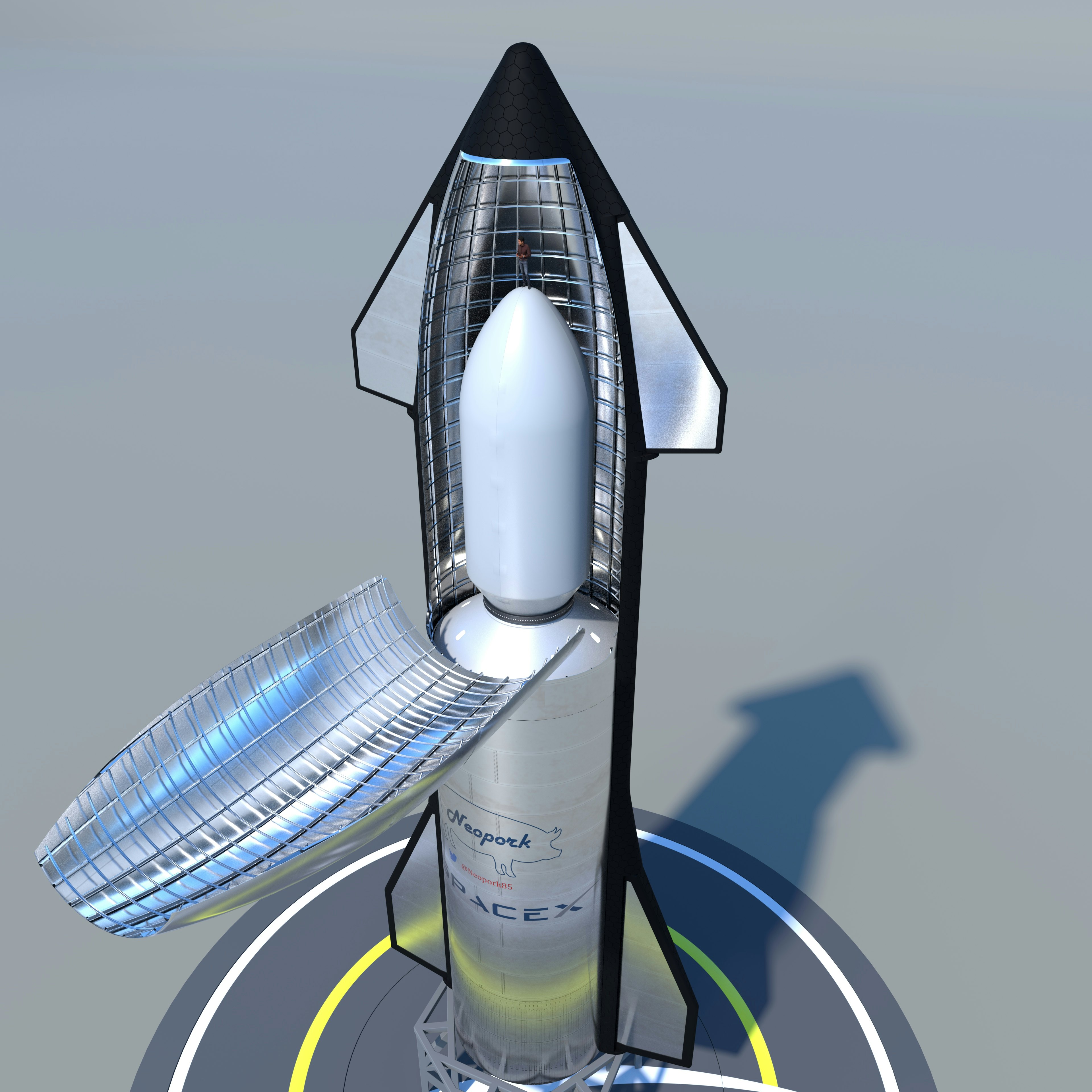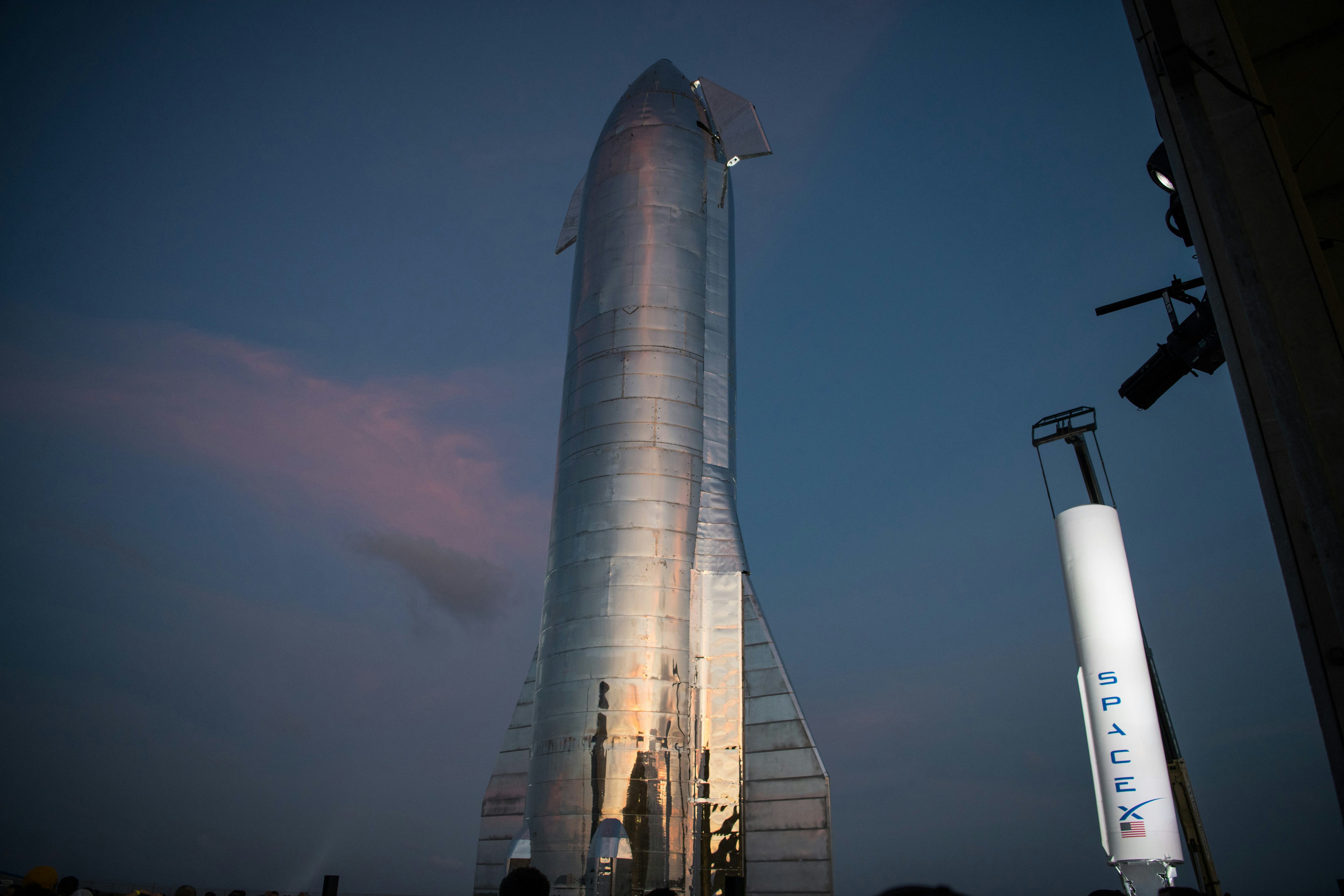
The Starship, SpaceX's giant rocket designed to send humans to the moon and Mars, looks set to eclipse its predecessor.
On July 4, Minnesota-based hobby 3D artist Bart Caldwell shared an image via Twitter of how the firm's upcoming ship compares to the Falcon 9. The Falcon 9 has been used by the firm since 2010 to launch up satellites – and, as of May 2020, NASA astronauts – but the under-development Starship is designed to take on those challenges and much more. The image shows the giant Starship with a Falcon 9 fairing inside, with 60 Starlink satellites and a man inside the smaller fairing.

Caldwell, who goes by "Neopork85" on Twitter, also sent Inverse a new image showing the same setup from a new angle. This alternate image shows the Falcon 9 fairing when covered.

Although the Starship is designed to carry out similar roles, the scale is much larger. The Falcon 9 stands 230 feet tall and measures 12 feet in diameter, with the ability to carry over 50,000 pounds to low-Earth orbit. The Starship, on the other hand, is expected to measure nearly 400 feet tall, with a diameter of 30 feet and the ability to send over 220,000 pounds to low-Earth orbit.
Caldwell, who works as an operations manager for a healthcare institute, tells Inverse that he decided to create the images to get a better sense of the size differences.
"I think it illustrates that Falcon 9 already has an impressively large payload volume," Caldwell says. "The real game-changer with Starship, other than an enormous fairing, is the mass-to-orbit capability."
The images, and their warm reception – it has nearly 100 likes at the time of writing – demonstrate the enthusiasm of the space community during this emergent new space race. An image shared by Caldwell last month drew praise from the likes of "Everyday Astronaut" channel host Tim Dodd and NASASpaceFlight managing editor Chris Bergin. This is a community that has grown alongside the likes of SpaceX and Blue Origin, companies that since the early 2000s have been drawing new attention to human spaceflight.
"The Starship project, and SpaceX in general, have helped me feel an excitement about space that I never felt while growing up," Caldwell says. "I grew up in the Shuttle and ISS era, but I feel like I missed out on the excitement of exploration and innovation associated with the Apollo era."

When Musk unveiled the Starship in September 2017 under the name "BFR," it brought this emergent new race to more ambitious highs. The fully-reusable rocket would be able to transport up to 100 people or 150 tons to space at a time. Its use of liquid oxygen and methane fuel would mean that astronauts could go to Mars, refuel with the planet's resources, and return home. The ship, Musk explained, could help humanity transform into a multi-planetary species.
"The sci-fi futures that I had been promised - with huge space stations and colonies on other celestial bodies - might actually come true," Caldwell says. "I am just so excited to see where this all goes."
The Inverse analysis – Caldwell's image shows the impressive size of SpaceX's upcoming ship, but also demonstrates the passion of a community ready for a new era of spaceflight to begin in earnest. Eager to share ideas and concepts about the future of space travel, the community has helped communicate the ambitious plans at play in the new space race.
Musk's timetable for the Starship's Mars mission remains ambitious. Last month, he declared that he was aiming to keep to the planned 2022 launch for two cargo ships to the red planet. But even if SpaceX has to postpone its mission, it remains the sort of project that has inspired members of the public to once again feel excited about space.







